A car-free future? How UK cities are moving towards a pedestrian age
With York announcing plans to ban private vehicles from its centre, Colin Drury asks: Is it a blueprint for a better urban life?

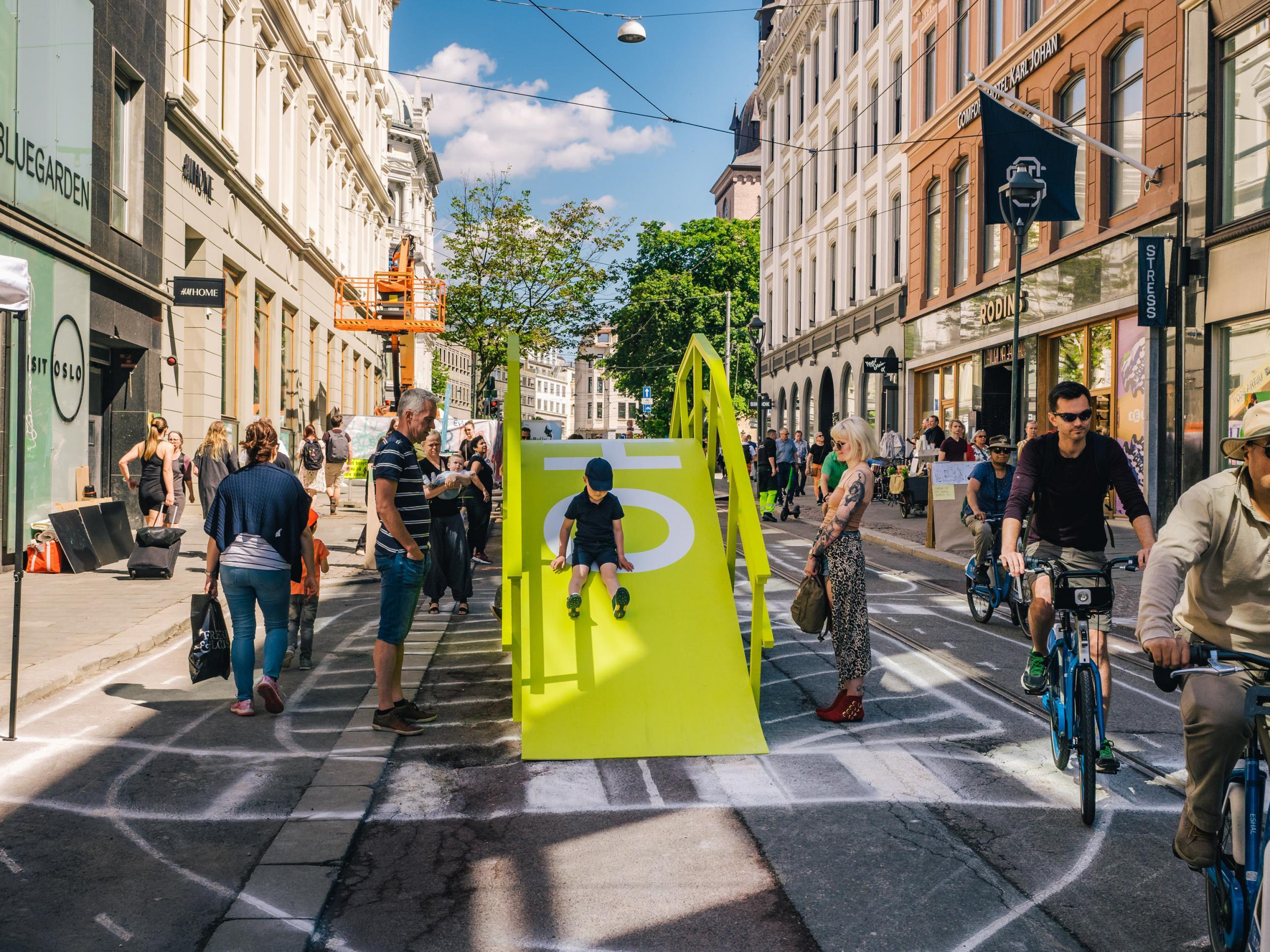
Rush hour, York city centre, sometime around the end of the decade. Stress-free commuters glide by on bicycles, community gardens are tended by volunteers as they leave work, and early evening diners spill outside on to table-filled squares.
Over in Fossgate, a mid-week street festival is just beginning. At the station, a line of on-demand driverless pods quickly and quietly whisk arriving rail passengers to their end destinations.
Such an idyllic vision is what this North Yorkshire city could look like if proposals approved by the council to make the centre car free by 2023 come to fruition. Or so say advocates.
Others, including the chamber of commerce, are not entirely convinced. There are concerns that less vehicles could ultimately mean reduced footfall leading to a nosediving economy, struggling businesses and plummeting job opportunities.
It is, in many ways, says one councillor, a fight for the heart and future of the city.
Yet this is not a battle which will be confined to York over the next decade.
As more calls are made for the country to reduce carbon emissions and congestion amid the ongoing climate crisis, the debate over the large-scale pedestrianisation of our urban centres is set to become one of the defining arguments of the 2020s.
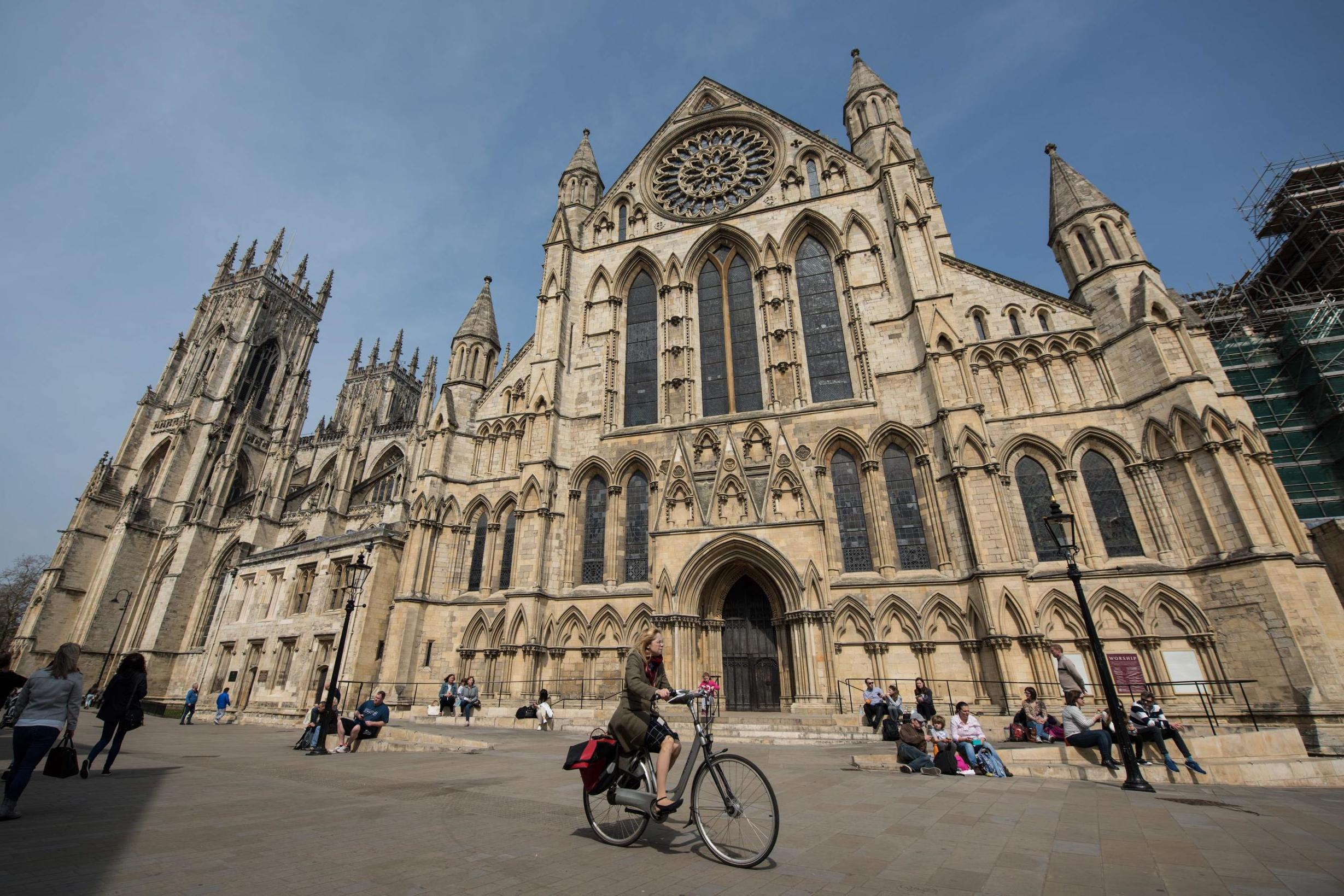
Already, Birmingham has announced an aspiration to stop private vehicles driving through its centre; Sheffield, Leeds and Edinburgh have experimented with (albeit limited) car-free days; and Bristol is to ban diesel vehicles next year. Already, too, opponents in all those places have voiced misgivings.
All of which perhaps raises two questions.
Can the UK city – an environment that has been designed almost entirely around the automobile for close to a century – really pivot to pedestrians and public transport? And what would car-free cities here look like anyway?
A sprawling car park outside a sprawling shopping centre on the outskirts of Bristol is probably not the obvious place to find the answer to either of those questions.
But at the Mall at Cribbs Causeway this week a team of developers, software engineers and transport academics were here hoping to offer a small glimpse into the future.
They were road-testing a £5.6m driverless pod – the sort of electric sci-fi buggy some strategists hope could one day zip people around car-less city centres.
But, as is the way of these things, not everything ran smoothly.
After more than two years state-of-the-art development – radar, lidar and vision processing are all key – the buggy, called Capri, kept being rendered immobile by the, er, sun.
The onboard sensors repeatedly mistook the morning glare for an object in the vehicle’s path, causing it to repeatedly brake.
“Teething issue,” noted George Lunt, technical director at Aecom, the infrastructure company leading the public-private project. “Better it stops when it shouldn’t, than it keeps going when it should stop.”
Such hiccups aside – and, by the end of the week, it appeared resolved – the government is seemingly committed to such driverless technology.
It has invested an estimated £250m in similar research projects since 2015 and has said it would like autonomous vehicles appearing on roads by next year. Indeed, if current tests in Scotland run smoothly, transport company Stagecoach says the UK’s first driverless bus could be scheduled between Edinburgh and Fife in early 2021. Albeit, a driver would actually remain on board at all times.
“It’s ambitious,” says Lunt as the Capri tootles about like something from Mos Eisley, the fictional spaceport town in Star Wars. “But there are so many benefits in terms of reduced environment impact, economic development and improving road safety. It would revolutionise the way we move around.”
Nonetheless, here in this car park such a future feels an awfully long way off. Technological issues, public scepticism about safety and the sheer cost of development could all prove significant roadblocks before such pods are seen in our cities.
In the meantime, many strategists argue, there is a rather cheaper, older bit of kit which, in fact, should be the focus when it comes to transforming how we travel: the bicycle.
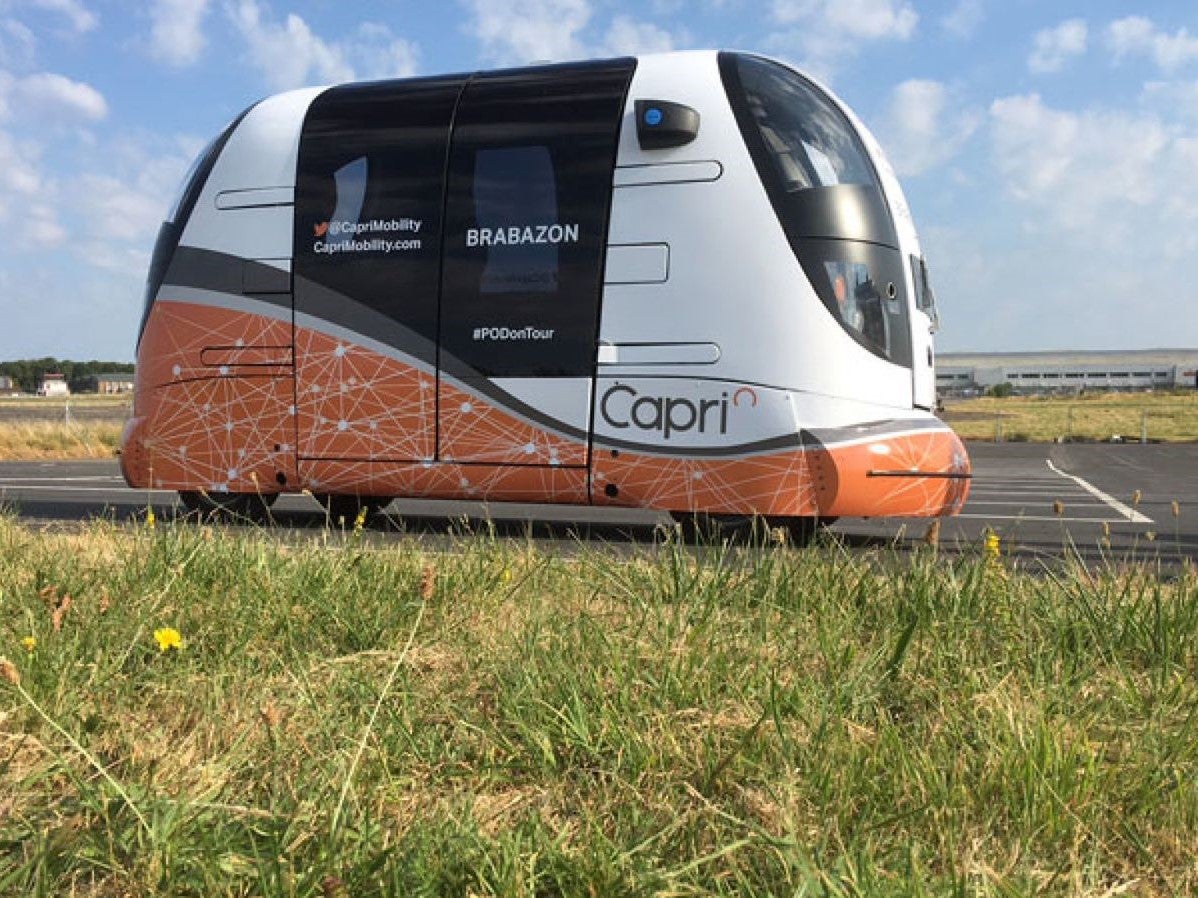
The Netherlands may today be the bike capital of the world but it was not inevitable it would be so.
In the Sixties, the place was as in thrall to the automobile as the rest of the western world. Entire neighbourhoods in cities like Amsterdam and Eindhoven were bulldozed for highways.
But, partially motivated by sky-rocketing motoring deaths – including 400 children in 1971 alone – a political decision was made that would transform the country: here, almost uniquely in Europe, cyclists would be prioritised over cars.
Money was pumped into creating bike-friendly paths, nation-wide car free days were held (photos show children playing on deserted motorways), and schools ordered to give mandatory safety lessons.
As early as the mid-Seventies, the northern city of Groningen was already turning virtually car free. There, a 24-year-old councillor, Max van den Berg, had been placed in charge of urban planning, and used his portfolio to push through measures redirecting cars around – rather than into – the historic centre. Roads were blocked off – initially with rubble – and dedicated cycle lanes laid out around restored buildings. Four local politicians resigned over the scheme and the city’s chamber of commerce petitioned the Dutch queen to stop it.
Yet almost 50 years on, Groningen is widely considered one of the most liveable cities in a country full of them. The chamber of commerce now credits the pedestrianised streets – and the sociability they encourage – with allowing independent business to thrive.
“But the point is that there is no special low countries gene which makes people there more inclined to cycling,” says Dr Steve Melia, a senior academic with the Centre for Transport and Society at the University of the West of England, in Bristol. “Cycling is prioritised there because a decision was made in the Sixties. There is absolutely no reason that same decision can’t be made here.”
No one, he adds, visits Amsterdam and says: “You know what it needs? More cars!”
He is worth listening to on this stuff.
Melia has spent two decades researching and advising both local and national government on transport infrastructure development. His 2015 book Urban Transport Without the Hot Air, saw him cycle across seven European countries to assess how urban travel could be made more sustainable. He himself neither drives nor flies. He was, for what it’s worth, fined last year for taking part in Extinction Rebellion protests.
Nonetheless, his overriding conclusion across 20 years of research is that the only realistic way of reducing congestion and pollution in the UK is to undergo a similar transformation as in the Netherlands.
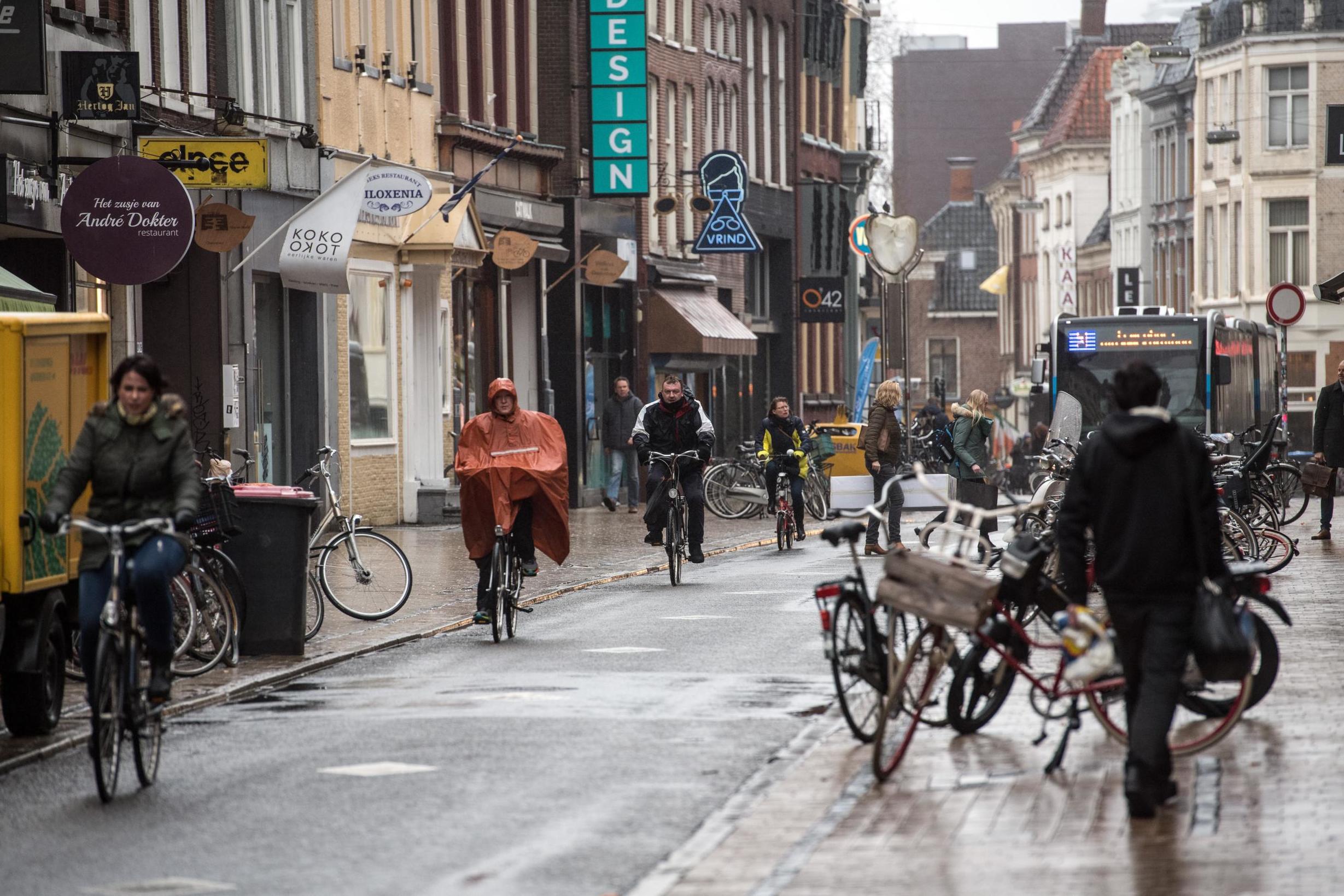
Politically, he suggests, this could be easier than often imagined.
That’s because small-scale pedestrianisation schemes, while often controversial when first mooted, are almost always overwhelmingly popular after completion. Queen Square in Bristol, Briggate in Leeds, and Cornmarket Street on Oxford are all well-known local examples of once traffic-clogged areas thriving after being made car free.
“Once these changes are made, with very few exceptions, the consensus quickly becomes that it was unthinkable vehicles were ever allowed there,” says Melia, adding that pedestrianising entire city centres would be met with the same long-term reaction: once done, future generations would look back and see the 80 years of car dominance as a bizarre historic anomaly.
His colleague at the centre, Professor Graham Parkhurst, agrees.
He points out that it took 50 years to build the majority of the UK’s motorway network, and about the same for the railway system.
“There’s no reason you couldn’t create a biking infrastructure in a similar time frame,” he says. “And, crucially, you would be able to do that at a fraction of the cost it takes to build the same amount of road infrastructure.”
Not that this would necessarily be cheap, it should be noted.
Chris Boardman, the Olympic cyclist-turned-campaigner who has proposed a detailed 1,800 mile biking network for Greater Manchester, estimates it would cost around £1.5bn to build. Yet if that sounds expensive, it’s worth comparing to a single five-mile road opened in Glasgow city centre in 2011. The M74 extension cost £692m – £138m for every single mile.
The common argument, too, that there are not enough cyclists to warrant such an infrastructure investment appears increasingly redundant.
Where such projects happen, numbers almost always increase. Just one example, experts like to point out, is Cambridge’s arterial Hills Road. The opening of a dedicated cycling lane there in 2017 has resulted in bikers increasing by more than a third.
This, roughly speaking, is what York aims to build on.
Cars will not be banned here but more likely a series of measures taken to make driving more difficult. Access roads into the centre – already limited because of the surrounding medieval walls – will probably be restricted to just a couple of inlets; parking spaces hugely reduced; and swathes of road turned over exclusively to walkers and bikers.
To accompany this perceived stick, the carrot.
Cycling, walking and mobility scooter infrastructure could be improved using the windfall that comes from not having to expand and build more roads, while streets would be beautified through planters, parklets and public seating. Permits for events – such as outdoor cinema or mini markets – would be made easier to acquire to encourage footfall. Restaurants and bars may be given presumed permission to set up tables outside. Mobile charging points and free wi-fi would be installed to boost “linger power”.
“I felt as a council, we’d been making a great play of declaring a climate emergency but there was no real action being taken,” says Jonny Crawshaw, the Labour councillor who first proposed the now-approved motion to restrict all non-essential vehicle access. “We’re living at a time when people, especially younger people, want to have less impact on the environment so there is a real opportunity to do something truly transformational.”
The reaction since the policy was approved has been largely positive, he says – though not universally so.
Comments on the York Press website have expressed concerns about the potential economic impact and practicalities of enforcing such a scheme, while the York and North Yorkshire Chamber of Commerce – though keen not to dismiss environmental considerations – has asked for an urgent meeting with council leader Keith Aspden. “Our members have many questions,” notes president Andrew Digwood.
All the same, with its ancient walls providing a natural exclusion zone and an economy with a heavy tourism base – and with a progressive council coalition of Lib Dems and Greens – this does feel like a proposal with momentum.
“There is appetite for change,” says Crawshaw. “If we’re bold, we can make York a model for others. If we don’t lead the way, others will.”
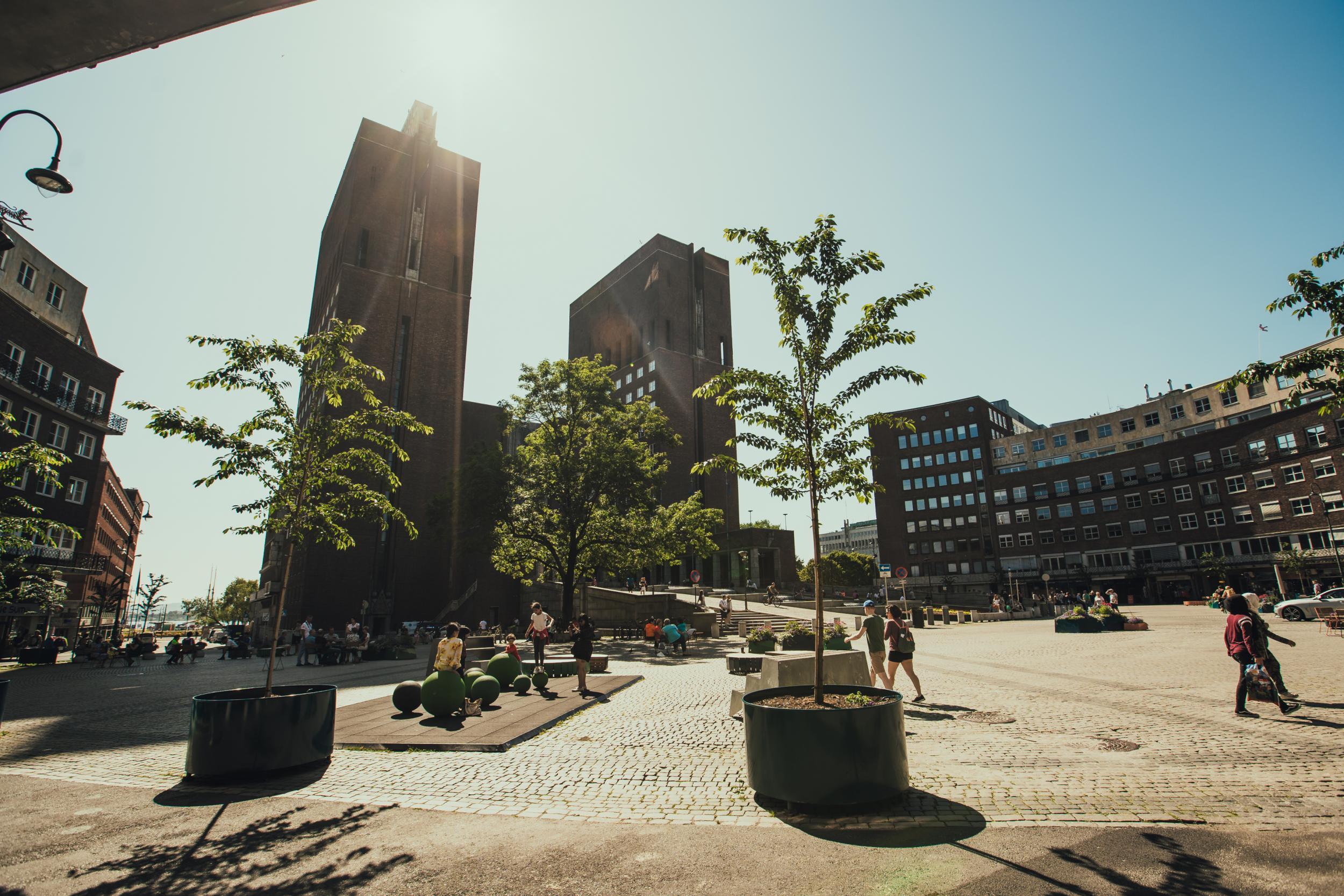
In fact, others already have. Just not in the UK.
An initiative to transform Lyon, in France, has seen swathes of former roads made traffic free and a sprawling car park adjacent to the city’s Saone River replaced with an actual park. In Freiburg, Germany, meanwhile, a neighbourhood of 5,000 people has been built without drives or parking spots. Cars that use the area’s deliberately narrow roads have to stick within a speed limit of 3mph.
But it is Oslo that perhaps the most significant change is happening.
A wide-ranging transformation first launched in 2015 is incrementally turning the Norwegian capital into what will be the first major European capital entirely without cars.
Although, says Hanna Marcussen, the city council’s deputy leader for urban development, “if I was to start all over, I wouldn’t call it car free. I personally hear that and imagine lovely streets. But a lot of people hear it and think we’re taking something away”.
What would she call it instead? “Perhaps people-friendly city?” the Green Party member says. “This is what it is.”
Certainly, public space now hums with (non-motorised) life. Streets have been rebuilt for walkers and cyclists, with the emphasis on more trees, more benches and, for those using public transport, more live information boards.
In summer, there are open-air art exhibitions and food markets in roads previously jammed with traffic; in winter, ice rinks and skiing tracks. The iconic city hall, previously hidden behind a roaring roundabout, has now been opened up.
Cars haven’t been banned but the city has been remodelled bit-by-bit to discourage their use: almost 1,000 car parking spaces have been removed while previous arterial routes have become one-way or blocked altogether to all but buses, emergency vehicles and those with special permits. As in Groningen 40 years earlier, it has been made so cars are essentially the least efficient way to travel.
“There was opposition when we started,” says Marcussen. “We had to say to those people that, I’m sorry, this is happening, it will not change. But work with us, let’s have dialogue, and we will address your concerns.”
Mainly, she says, it was businesses worried about footfall. In the event, it has gone up by 14 per cent in streets where work has been done. Biking now equates to seven per cent of all journeys made and public transport 29 per cent.
“But we expect those figures to rise further as there is a cultural shift,” she adds.
Certainly, residents appear to have bought into the scheme: at the 2019 city elections, the Greens, which have driven the change as part of the council’s ruling coalition, doubled their number of seats.
What is her advice for UK cities hoping to achieve something similar? “Do it,” she says. “Once people experience cities like this, they are enthused.”
It is a thought that echoes those of Steve Melia.
Back at the Centre for Transport and Society in Bristol, both he and Graham Parkhurst are also keen to stress that government – as well as city authorities – must also help drive change.
Nudge theory tactics such as tax breaks on buying bikes and altering planning policy to reward developments discouraging private cars would help, they say. So too would the “gamification” of walking – schemes where city residents can win rewards for using their legs instead of wheels.
“A relatively small amount of money going into something like that would make it back in a reduced health service bill because you have a fitter, more active population,” says Parkhurst.
The reduced air pollution, he adds, would help the NHS too.
One in 19 deaths of people living in urban areas is caused by pollution according to a new study by the Centre for Cities. Strip away the main polluter – cars – and that number goes down. Put simply, people live longer.
The challenge, of course, may be how to do all this while ensuring such places remain accessible to those with mobility difficulties.
Blue badge access, priority for mobility scooters, better (electric) bus services and the development of those automated pods would all help ease potential issues, experts say.
“I think the argument that a city with fewer cars is somehow less inclusive is a misnomer,” says Melia again. “It would be the opposite.”
Streets, he says, would become more spacious and wheelchair-friendly; public transport would be more reliable and efficient without so much traffic; and those granted blue badge permissions would have a clearer run of roads.
As the conversation draws to a close, talk turns to how York might look in a decade. Could he imagine a scene like that described at the beginning of this article?
“It has to go that way,” he says. “It needs political will but we can’t just keep building roads and pumping out more emissions. Our cities need to change. The future has to be different.”
Join our commenting forum
Join thought-provoking conversations, follow other Independent readers and see their replies
0Comments